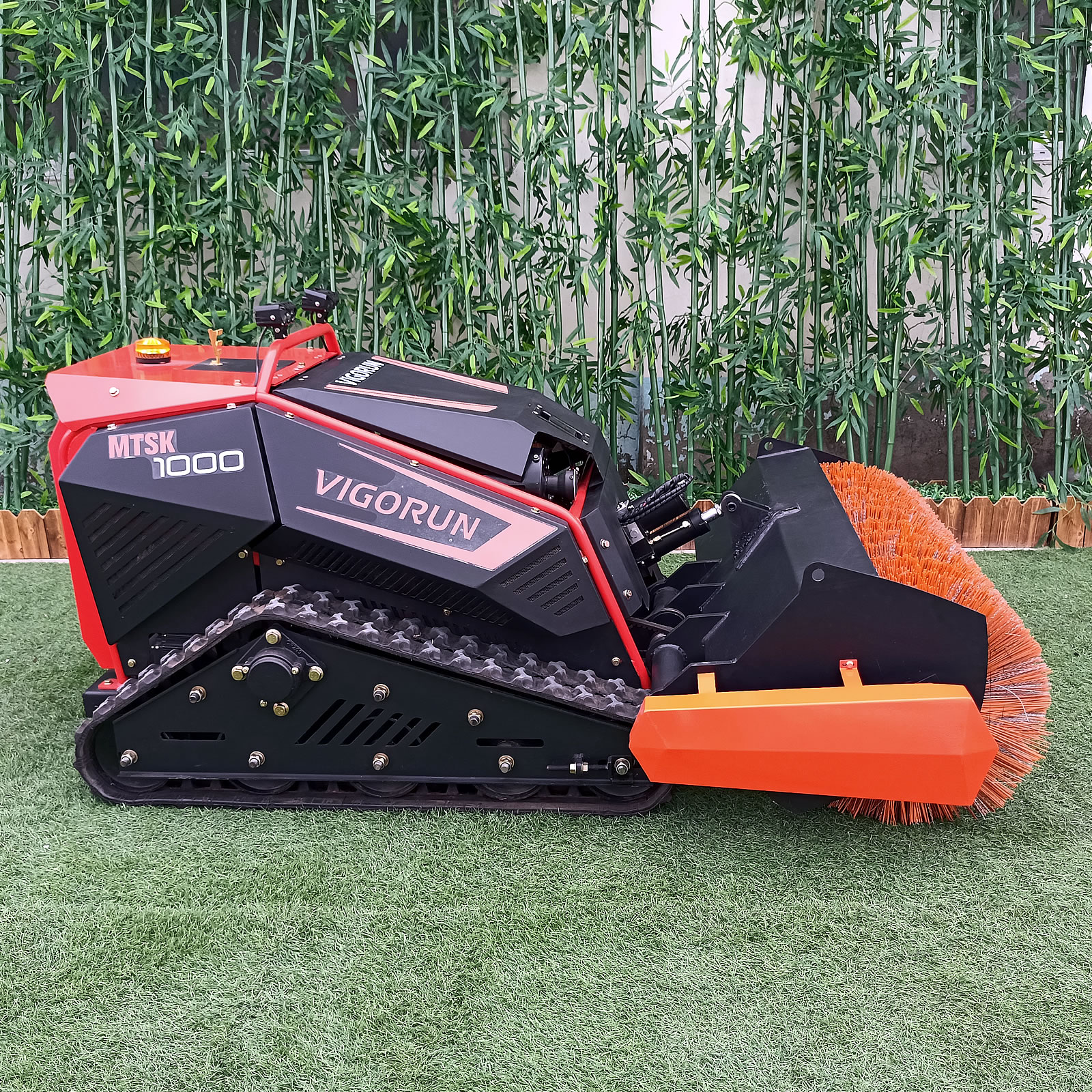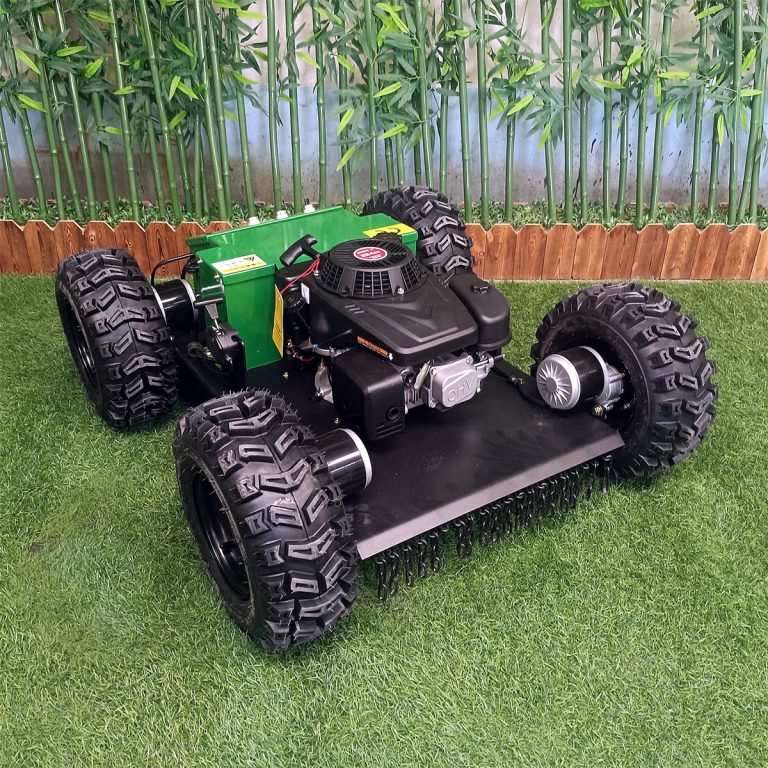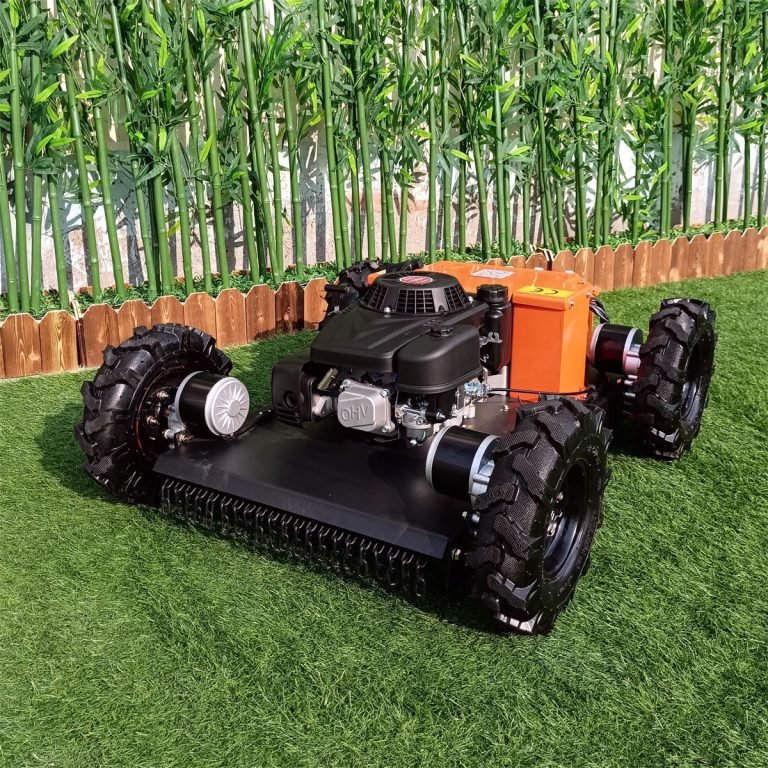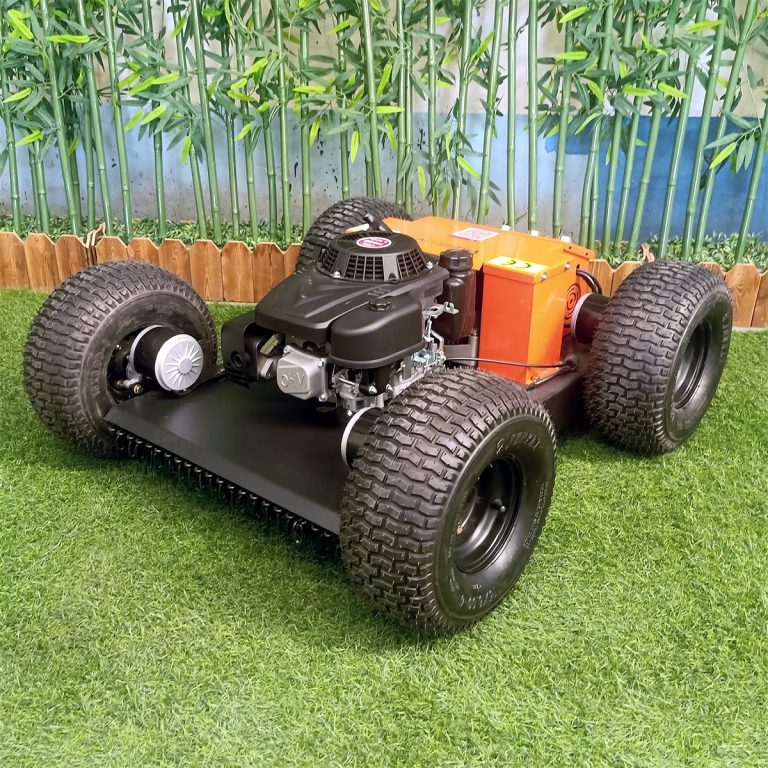Table of Contents
ویژگی های موتور بنزینی Loncin 764CC

موتور بنزینی قدرتمند 764 سی سی گشتاور قابل توجهی را ارائه می دهد و به مالچر امکان می دهد تا به راحتی از پس زمین های چالش برانگیز برآید. چه برای مقابله با شیب های تند و چه با پوشش گیاهی متراکم، این ماشین آلات به گونه ای طراحی شده است که آن را به یک ابزار ضروری برای عملیات جنگلداری تبدیل می کند.

با مهندسی پیشرفته، موتور Loncin قابلیت اطمینان را با عملکرد ترکیب می کند و تضمین می کند که کاربران می توانند برای عملکرد ثابت در محیط های مختلف روی آن حساب کنند. این امر مالچر را به یک دارایی ارزشمند برای کسانی که در پاکسازی و نگهداری زمین مشغول هستند تبدیل می کند.

تطبیق پذیری و ویژگی های ایمنی
سروی کنترل کننده هوشمند نقش مهمی در مدیریت سرعت موتور و همگام سازی مسیرهای چپ و راست ایفا می کند و امکان سفر صاف و مستقیم را بدون تنظیمات ثابت فراهم می کند. این کارایی بار کاری اپراتور را به حداقل می رساند و خطرات مربوط به اصلاح بیش از حد را به خصوص در شیب های تند کاهش می دهد.

The Loncin 764CC gasoline engine cutting height adjustable tracked remotely controlled forestry mulcher is equipped with two 48V 1500W servo motors that provide robust power for climbing and maneuvering. These motors enhance the machine’s capability, allowing it to navigate uneven terrain confidently.
One of the standout safety features includes a built-in self-locking function, which ensures that the machine remains stationary unless both power is activated and throttle is applied. This feature significantly reduces the risk of unintended movement, giving operators peace of mind during operation.
Additionally, the high reduction ratio worm gear reducer multiplies the torque produced by the servo motors, providing formidable output torque for climbing resistance. This innovation also includes mechanical self-locking during power loss, preventing the machine from sliding downhill, further enhancing operational safety.

The intelligent servo controller plays a crucial role in managing motor speed and synchronizing the left and right tracks, allowing for smooth and straight-line travel without constant adjustments. This efficiency minimizes operator workload and reduces risks associated with over-correction, especially on steep slopes.




